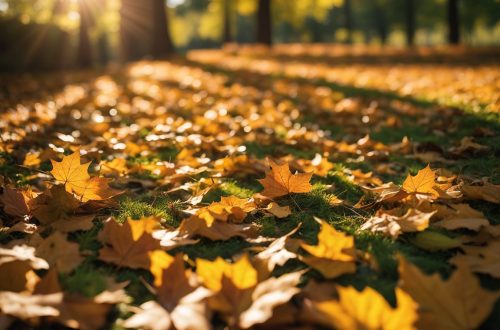Best Time of Year to Clear Brush: Optimal Seasons Revealed
The best time of year to clear brush is typically during the spring or fall seasons. These times offer cooler temperatures and lower fire risks, making it easier and safer to remove overgrowth.
Clearing brush during these seasons can help prevent wildfires and promote healthy growth in your outdoor space. Spring allows for cutting back before plants fully regrow, while fall provides a chance to prepare for the coming winter months. By planning your brush clearing during these optimal times, you can ensure a more effective and efficient process while maintaining the overall health and safety of your property.
Introduction To Brush Management
Brush management is the process of removing excess vegetation that can cause a fire hazard, damage to property, or harm to wildlife. Brush clearing is an essential task for homeowners, ranchers, and landowners who want to prevent wildfires and keep their properties safe.
Importance Of Regular Clearing
Regular brush clearing is essential to maintain a healthy ecosystem, prevent wildfires, and protect property. Brush can easily catch fire and spread quickly, especially during dry seasons. By removing excess brush, you reduce the risk of wildfire and create a safer environment for your property and your neighbors.
Environmental Benefits
Regular brush clearing has many environmental benefits, including reducing the risk of wildfires, preserving native plant species, and maintaining the natural beauty of the landscape. It also helps to protect wildlife habitats and prevent soil erosion.
Clearing brush at the right time of year is crucial to its effectiveness. The best time to clear brush is in the late fall or early winter when the vegetation is dormant, and the weather is cooler. This makes it easier to remove the brush and reduces the risk of fires.
Clearing brush can be a daunting task, but it is a necessary one to maintain a safe environment. By understanding the importance of regular clearing and the environmental benefits, you can take the necessary steps to keep your property and the surrounding area safe.
Seasonal Impacts On Brush Growth
Brush growth is influenced by the changing seasons, with each season presenting unique challenges and opportunities for clearing operations.
Spring Surge
Spring sees a surge in brush growth due to increased sunlight and warmer temperatures.
Summer Stagnation
Summer brings stagnation in brush growth as the heat and dry conditions slow down vegetation.
Fall: The Prime Season For Brush Clearing
Fall is the prime season for brush clearing, offering optimal conditions and numerous advantages for tackling this important outdoor task. The cooler temperatures and decreased humidity create an ideal environment for clearing brush, making it easier and more comfortable to complete the job. In addition, the timing aligns with pre-winter preparations, ensuring that your property is ready for the colder months ahead.
Reasons For Fall Preference
1. Cooler Temperatures: Fall brings relief from the sweltering heat of summer, making it more comfortable to work outdoors for extended periods.
2. Decreased Humidity: Lower humidity levels in the fall reduce the risk of dehydration and heat exhaustion, allowing for safer and more efficient brush clearing.
3. Vegetation Dormancy: Many plants enter a dormant phase in the fall, making it easier to identify and clear brush without the interference of actively growing foliage.
Pre-winter Preparations
1. Fire Prevention: Clearing brush in the fall reduces the risk of wildfires, especially in areas prone to dry conditions and strong winds during the winter months.
2. Property Protection: Removing excess brush and debris helps safeguard your property from potential damage caused by winter storms and heavy snowfall.
3. Wildlife Habitat Preservation: By clearing brush before winter, you can minimize disruptions to wildlife habitats and ensure that animals have ample time to adjust to changes in their environment.
Winter Considerations For Brush Removal
When it comes to brush removal, winter offers unique advantages and considerations. Clearing brush during the winter months comes with specific benefits and challenges that are important to understand. Let’s delve into the winter considerations for brush removal to make informed decisions about managing vegetation during this time of year.
Dormant Vegetation Advantage
Winter provides an opportune time for brush removal as many plants are dormant during this season. Dormant vegetation is less resistant to removal efforts, making it easier to clear brush without the risk of regrowth. This dormant state also reduces the likelihood of spreading seeds or facilitating plant propagation, simplifying the clearing process.
Soil And Wildlife Considerations
Winter brush removal minimizes disturbance to the soil due to the frozen ground, reducing potential damage to the root systems of surrounding vegetation. This can help preserve the integrity of the ecosystem. Additionally, wildlife disturbance is minimized during winter, decreasing the impact on local fauna and their habitats.
Spring Cleaning: Pros And Cons
Spring is often considered the best time of year to clear brush, as it offers a range of advantages. However, there are also some challenges associated with clearing brush during this season. Let’s take a closer look at the pros and cons of spring cleaning.
Growth Assessment
Spring is a time of rapid growth for vegetation. This means that any brush that needs to be cleared will likely be at its most manageable stage during this time. The warm weather and increased sunlight stimulate plant growth, making it easier to assess and clear the overgrowth.
Challenges With New Sprouts
On the flip side, the new growth in spring can present challenges when clearing brush. The fresh sprouts can make it difficult to distinguish between desirable plants and unwanted brush, requiring extra care to avoid damaging the surrounding vegetation.
Summer Challenges In Brush Management
When it comes to brush management, summer presents a unique set of challenges. The combination of heat, overgrowth, and dry conditions can make brush clearing a particularly demanding task during the warmer months.
Heat And Hydration Factors
The intense summer heat can pose significant challenges for those engaged in brush management activities. It’s crucial to stay hydrated and take frequent breaks to prevent heat-related illnesses. Without proper hydration and rest, the risk of heat exhaustion and dehydration increases substantially.
Overgrowth Issues
During the summer, vegetation tends to overgrow at a rapid rate. The warm temperatures and longer days provide the ideal conditions for brush and weeds to proliferate. This rampant overgrowth can make it more difficult to effectively clear the area, necessitating more frequent maintenance and attention to prevent the area from becoming unmanageable.
Tools And Techniques For Effective Brush Clearing
Manual Vs. Mechanical Methods
When clearing brush, consider the benefits of manual and mechanical approaches.
Safety And Efficiency Tips
Ensure safety and maximize efficiency with these helpful tips.
Year-round Brush Management Tips
Discover the optimal timing for brush clearance throughout the year to maintain a tidy landscape. Implementing year-round brush management tips ensures effective and efficient clearing of brush at the best times.
Regular Maintenance Schedule
Regular brush maintenance is important for keeping your property safe from potential fire hazards and maintaining a healthy ecosystem. The best time to clear brush is during the fall and winter months when the vegetation is dormant and there is less risk of fire. However, it’s important to stick to a regular maintenance schedule throughout the year to keep brush growth under control.Eco-friendly Practices
When clearing brush, it’s important to use eco-friendly practices to minimize your impact on the environment. Instead of using chemical herbicides, opt for manual or mechanical methods like mowing, pruning, or hand-pulling. This will not only help preserve the natural ecosystem but also promote healthy plant growth.Other Brush Management Tips
In addition to regular maintenance and eco-friendly practices, here are some other tips for managing brush on your property:- Remove dead or diseased trees and shrubs to prevent the spread of disease.
- Plant fire-resistant vegetation to reduce the risk of wildfires.
- Clear a buffer zone around your property to prevent fires from spreading.
- Dispose of brush and debris properly to prevent the spread of invasive species.
Frequently Asked Questions
How Do You Clear A Brush And Keep It From Growing Back?
To clear and prevent brush from growing back, use herbicides, mow regularly, or employ goats for grazing. Additionally, you can plant dense ground cover or lay down landscaping fabric. Regular maintenance is key to keeping brush at bay.
When’s The Best Time To Clear Land?
The best time to clear land is during the dry seasons to avoid muddy conditions.
Should You Clear Brushes From The Woods?
Clearing brushes from the woods can reduce fire risks and promote healthy forest growth. It is recommended for safety and conservation purposes.
What Is The Best Tool To Clear Brush?
The best tool to clear brush is a brush cutter. It is efficient and versatile for cutting through dense vegetation.
Conclusion
The best time of year to clear brush is during the late fall or early spring. By understanding the seasonal factors that affect brush clearance, you can ensure that your efforts are as effective as possible. Keeping in mind the weather conditions and local regulations will help you plan the best time for brush clearance.
This will ultimately contribute to a safer and more visually appealing environment.


